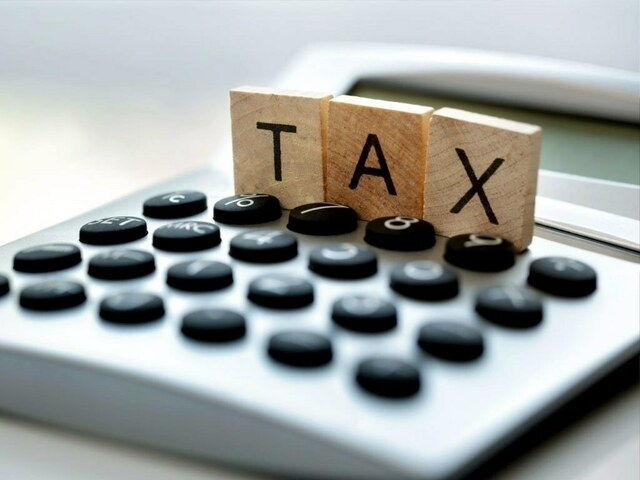Effective Tax Rate
Jan 07, 2024 By Triston Martin
A person or a business's efficient tax percent is the percentage of tax liability required to pay in taxes. The overall return is something at which an individual's received money, such as salaries, and cash payments, dividend payments, are subject to taxation and considered as that individual's effective tax rate. Statutory taxation is the lawful percentage set by law, whereas the revenue for a business is the influential figure according to which an organization's earnings have been taxed. In contrast, the income tax rate for an individual is the level at which they pay taxes.
Acquiring a Grasp of the Marginal Rate Of Taxation
A person may determine their actual tax rate by glancing at the 1040 application and combining the figure found on line 16 of the form, which is labeled "Total Pay," even by the amount marked "Income Tax." The overall tax rate is determined by the effective tax rate calculation firm's total tax costs by the industry's before-tax profits. This is done for companies.
Effective Tax Rate Calculation:

The actual tax rates that are also known as ETR, have been assigned for people and companies, and the following is the equation if you want to do effective tax rate calculation by yourself:
Effective Tax Rate For Individual: Total Tax ÷ Taxable Income
Effective Tax Rate For Corporation: Total Tax ÷ Earning Before Tax
The actual tax rate solely relates to taxes paid on personal income and does not consider taxes paid on state and regional income, taxes paid on trade, taxes paid on ownership, or any other forms of taxes that a person may be required to pay. Individuals may effectively calculate their aggregate effective tax rate by adding up their whole tax burden and dividing that number by their tax liability. Whether you're attempting to compare the effective tax rates of two or more persons, or you're just curious about how much tax you'd have to pay if you moved from a high-tax to a low-tax state in retirement, this calculator can help.
Methods for Figuring Out the Actual Tax Rate
When dealing with conglomerates, effective taxation can be determined by dividing the total amount spent on taxes by the firm's earnings before taxes. The overall tax rate is determined for persons by multiplying their total tax liability by their total income subject to taxation.
Template 1040 provides the information on "Maximum Tax" and "Tax Payable" to the people in the United States. An employee's actual taxable income is determined on the form. An estimation is provided regarding the amount of tax that must be payable by the subject, or the administration would return that. It is required to file individual income tax returns with the federal government.
Example of An Effective Tax Rate

Take into consideration the following instance:
Usually, people make their home in a nation that has a stable tax system, and their liaisons are as follows:
The tax rate on incomes less than $100,000 is approximately 12%, the tax rate on incomes among $100,000 &' $350,000 is approximately 18 percent, and the tax rate on incomes greater than $365,000 is 28%.
Instead of differing taxable earnings, both entities qualify for the 28% tax rate according to the information presently accessible. It would imply that each of them would be responsible for paying the 12% tax bracket on the first $100,000, which comes to a total of $12,000. Moreover, they will both be responsible for paying the 18% tax on the value between $100,000 and $350,000 (a discrepancy of $250,000), which is calculated as 18% divided by $250,000, which is $45,000. This tax will be levied on the distinction between the two amounts.
They are responsible for paying 28 percent tax on the portion of their earnings over the threshold amount of $350,000. Individual A, who has a tax liability of $450,000, would owe a total of $28,000 in taxes if they were subject to the 28% tax rate. Individual X, who has an earned profit of $400,000, would owe a total of $8,400 in taxes if they fell into the band, as mentioned earlier.
As a result, the tax liability for Individual A would be calculated at $85,000, whereas the tax liability for Individual X would be $65,400. Individual A would have an effective tax rate of 18.8%, whereas Individual X would have an effective tax rate of 17.2%. Both of these people fall into the same tax category of 28%. However, their rates of taxation are somewhat different from one another.
Comparison Between Effective and Marginal Tax Rate
When compared to the income tax rate, an individual's or corporation's effective rate of taxation is a more realistic reflection of their entire tax burden. Additionally, the tax rate is often lower. When comparing a marginal tax rate to an effective tax percent, it is essential to remember that the marginal rate of taxation is the rate that applies to the entire tax band for what a person's income qualifies.
Moreover, if a country has a comprehended progressive or regressive taxation system, different incomes are subject to different tax rates, increasing when such payments surpass certain limits. Two people or businesses can end up with drastically different tax rates, even though their incomes fall into the same higher marginal tax band. This is because the percentage of their total revenue that falls into the highest tax bracket determines the effective tax rate.

Uncovering the Transfer-For-Value Rule in Insurance: A Layman's Guide

House Flipping Mistakes That Could Make You a Failure

What is After-Hours Trading, and How Can You Benefit From Its Impact?

Strategies for Early Retirement: A Closer Look at Age 62

What Does the Volatility Index (VIX) Indicate? A Beginner's Guide

How Excess of Loss Reinsurance Operates in the Insurance Industry?

Doji Candlesticks: Unlocking Market Insights Through Indecision

A Comprehensive Overview of Setting Up a Special Needs Trust

How to Learn Financial Management

